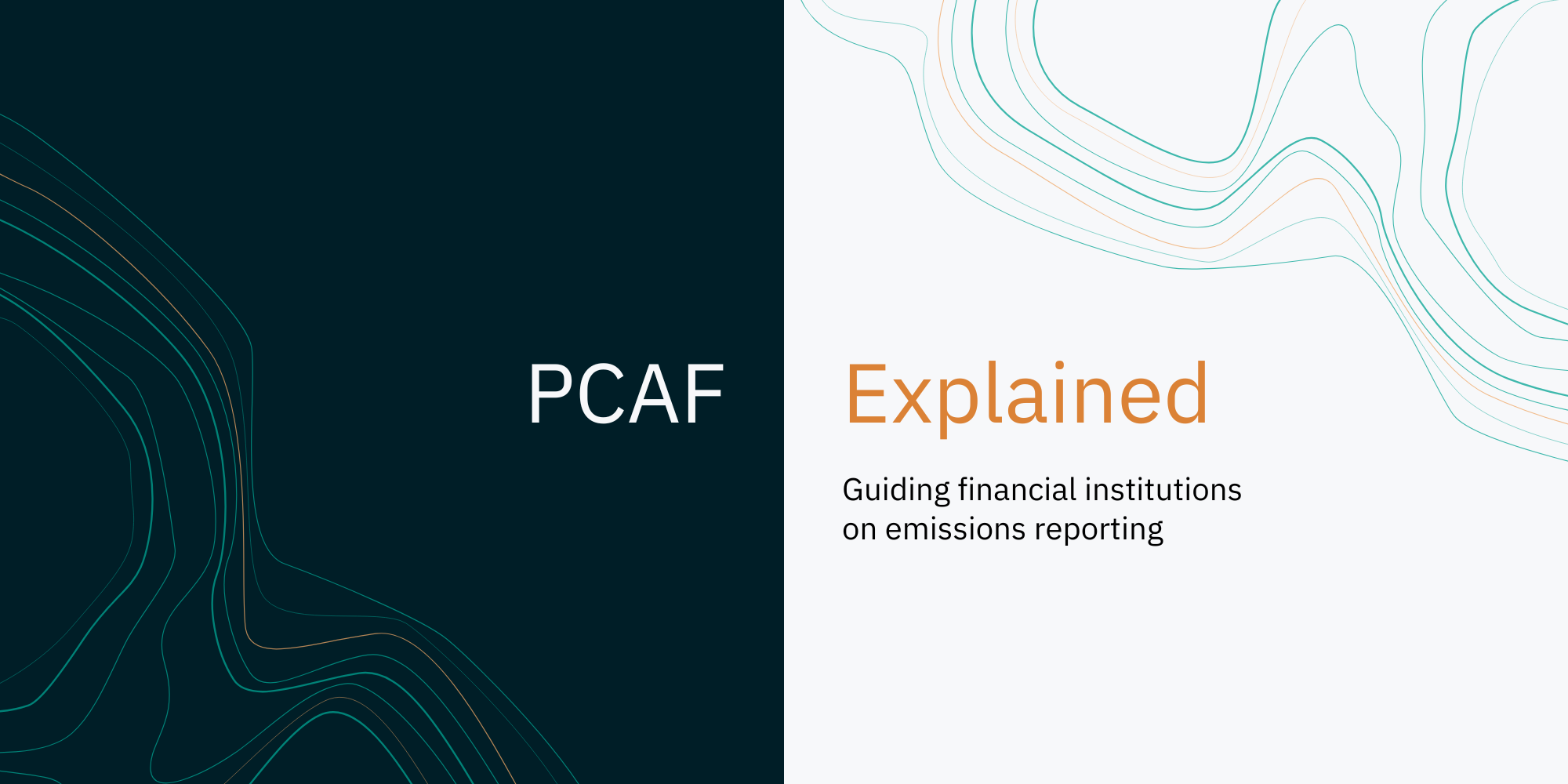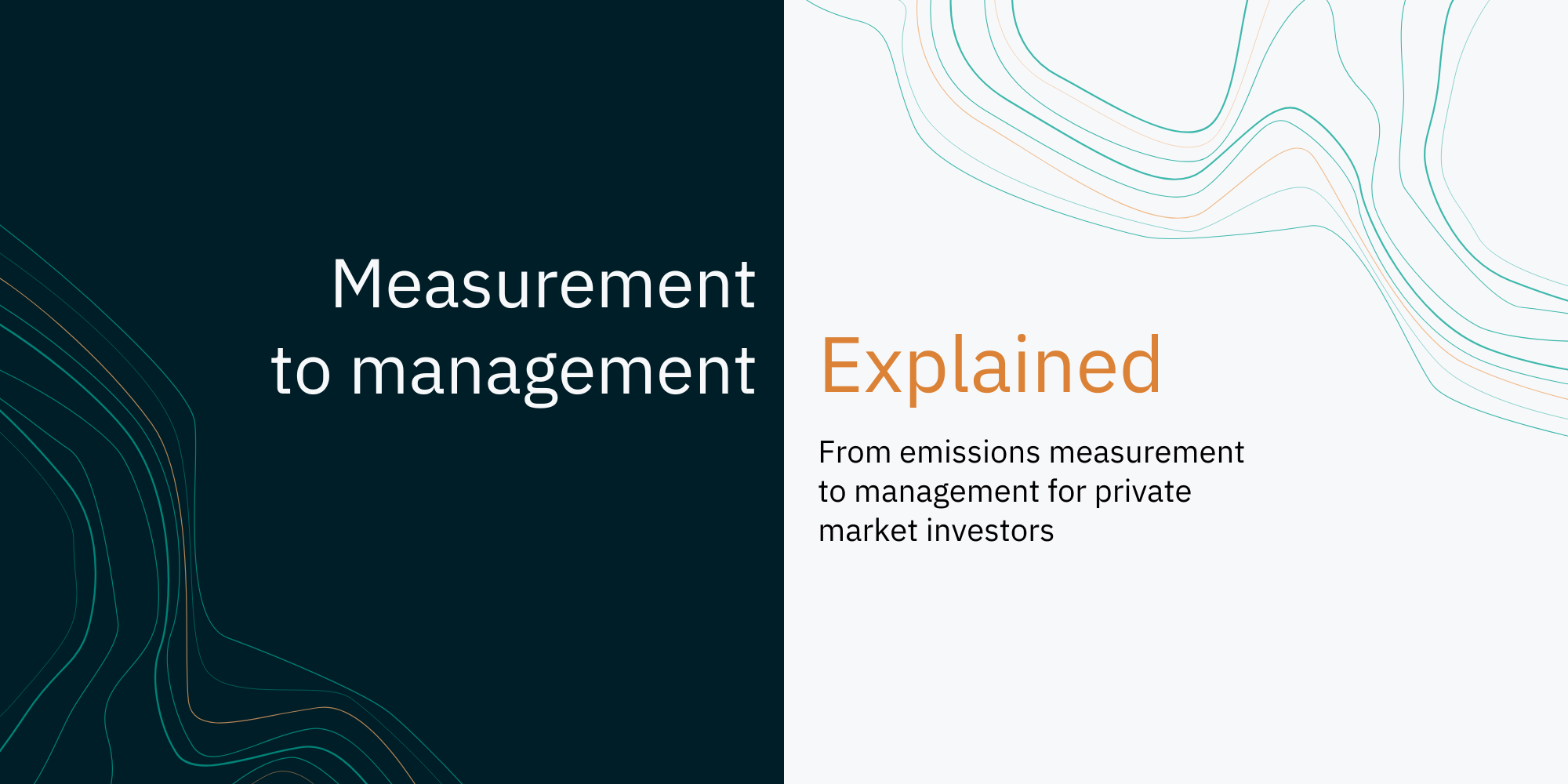The Greenhouse Gas Protocol – or the GHG Protocol – is an internationally recognised accounting tool developed by the World Resources Institute (WRI) and the World Business Council for Sustainable Development (WBCSD). It presents the founding principles of carbon accounting and is the global standard for organisations to measure, manage, and report their greenhouse gas (GHG) emissions.
For investors, understanding the GHG Protocol and how it applies to the emissions stemming from their investing activities – their financed emissions – is critical.
Not only can the GHG Protocol help them to identify exposure to climate-related risks and opportunities across their portfolio, but it also underpins many other important climate-related international frameworks, such as the Partnership for Carbon Accounting Financials (PCAF), a comprehensive methodology to measure financed emissions accurately and consistently across a range of asset classes.
Key sections in this article include:
- What is the GHG Protocol?
- Classification of emissions
- The relevance and benefits of the GHG Protocol for investors
- The Pathzero solution
What is the GHG Protocol?
The GHG Protocol establishes comprehensive global standardised frameworks to measure and manage GHG emissions from private and public sector operations, value chains and mitigation actions.
Measuring and managing GHG emissions allows organisations to understand the extent of the impact of their activities on the climate, including across their value chain. By doing so, they can develop effective strategies to reduce their emissions, contribute to mitigating climate change, and benefit from the opportunities associated with transitioning to a low carbon economy.
The GHG Protocol is the result of a partnership between the WRI and the WBCSD. The first edition of the corporate standard was published in 2001, with new standards and guidelines developed through a process that includes stakeholder outreach and consultation.
GHG Protocol standards
The GHG Protocol provides standards for specific purposes, namely:
- Corporate Standard
- GHG Protocol for Cities
- Project Protocol
- Mitigation Goal Standard
- Product Standard
- Policy and Action Standard
- Corporate Value Chain (Scope 3) Standard
These standards provide a framework for organisations and entities to measure and report their GHG emissions, with the goal of facilitating wider sustainability goals.
Additionally, the GHG Protocol provides guidelines on how to apply these standards in particular sectors, including the financial industry.
Classification of emissions
To minimise the difficulty associated with the measurement of a company’s total emissions, the GHG Protocol has defined and categorised the various emission sources into what is referred to as ‘scopes’.
These scopes include:
Scope 1: direct emissions which originate from operations that are either owned or controlled by a company. For example, any fuel used for your company-owned vehicles.
Scope 2: indirect emissions that occur following the generation of purchases or acquired electricity, steam, or heat. These emissions are a consequence of the energy consumed at a site owned or controlled by the business. For example, electricity usage in your office.
Scope 3: all remaining emissions that occur in organisations supply or value chain. For example, lawyer fees would be included in Professional Services.

The relevance and benefits of the GHG Protocol for investors
The relevance of the GHG Protocol to investors
The GHG Protocol provides a consistent framework for investors to use on their climate journey.
Asset owners and managers need to think about the emissions from their own operations – their organisational emissions – but also, crucially, those from the companies they invest in – their financed emissions – which often constitutes the vast majority of their emissions profile.
According to a report released by the CDP Financial Services Disclosure Report 2020, financed emissions are over 700x larger than direct emissions for financial institutions, and the risks of inaction are huge.
Financed emissions are categorised as Scope 3, Category 15 emissions under the GHG Protocol.
The benefits to investors of adhering to the GHG Protocol
By adhering to the GHG Protocol when measuring their financed emissions, asset owners and managers can:
1. Use standardised data to compare climate-related risks and opportunities across investments
Importantly, the broad global adoption of the GHG Protocol means that investors and the broader economy alike all use the same methodology and language to measure and communicate emissions information.
This is an important step in being able to make informed investment and stewardship decisions, helping to balance the need to manage systemic risks and achieve the desired risk-adjusted returns.
Equipped with standardised data, investors are enabled to engage with portfolio companies on their climate strategy. Investors can pose targeted questions, encourage the establishment of emission reduction targets, promote transparency, and evaluate risk reduction strategies. This engagement will drive positive changes within companies and facilitate the transition to a low-carbon economy.
Understanding how the business environment for a company may change because of climate risk leads to better-informed investment decisions.
2. Understand alignment with global frameworks
The GHG Protocol supports key aspects of important climate-related international frameworks, such as metrics and targets to be disclosed under Task Force on Climate-related Financial Disclosures (TCFD) reporting. The IFRS Foundation – which may better known for its work to establish the International Sustainability Standards Board (ISSB) – has recently taken over the monitoring of companies' climate-related disclosures from the TCFD. Together, these frameworks and protocols facilitate consistent reporting, enabling investors to compare and benchmark emissions data across companies and industries.
One of the most important frameworks that the GHG Protocol aligns with and endorses is the Partnership for Carbon Accounting Financials (PCAF).
PCAF is built upon the GHG Protocol and lays out the methodology for calculating financed emissions (Scope 3, category 15 under the GHG Protocol) across a range of asset classes.
The first edition of the PCAF Financed Emissions Standard has been reviewed by the GHG Protocol and is in conformance with the requirements set forth in the Corporate Value Chain (Scope 3) Accounting and Reporting Standard, for Category 15 investment activities.
Further editions to the PCAF Standards are subject to GHG Protocol review and approval.
The Pathzero solution
Sustainability and climate-related financial disclosures in private markets, in line with ISSB standards, are set to rise in Australia and globally.
However, one challenge to broad uptake is a lack of standardised climate data from portfolio companies, and the lack of in-house expertise.
Pathzero is helping to overcome these barriers by uniting private market participants on a common platform.
We bring asset owners, asset managers and portfolio companies onto a shared platform that offers emissions calculations aligned to leading industry standards including the Greenhouse Gas Protocol, and the Partnership for Carbon Accounting Financials Standard.
The Pathzero platform facilitates secure carbon data sharing between parties, enabling collaboration and data-informed decision-making to reduce emissions.



